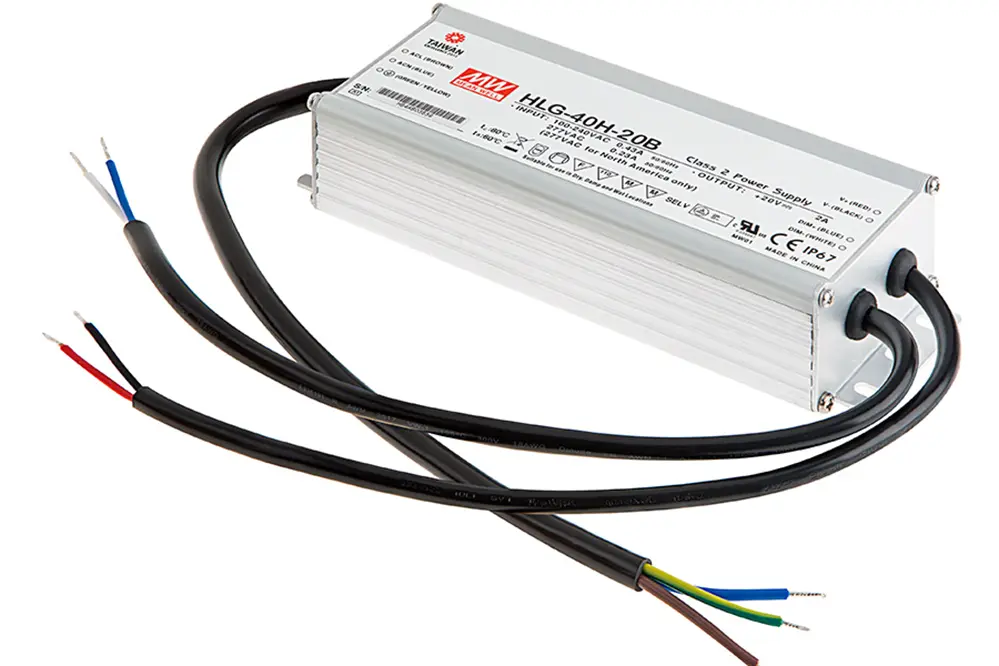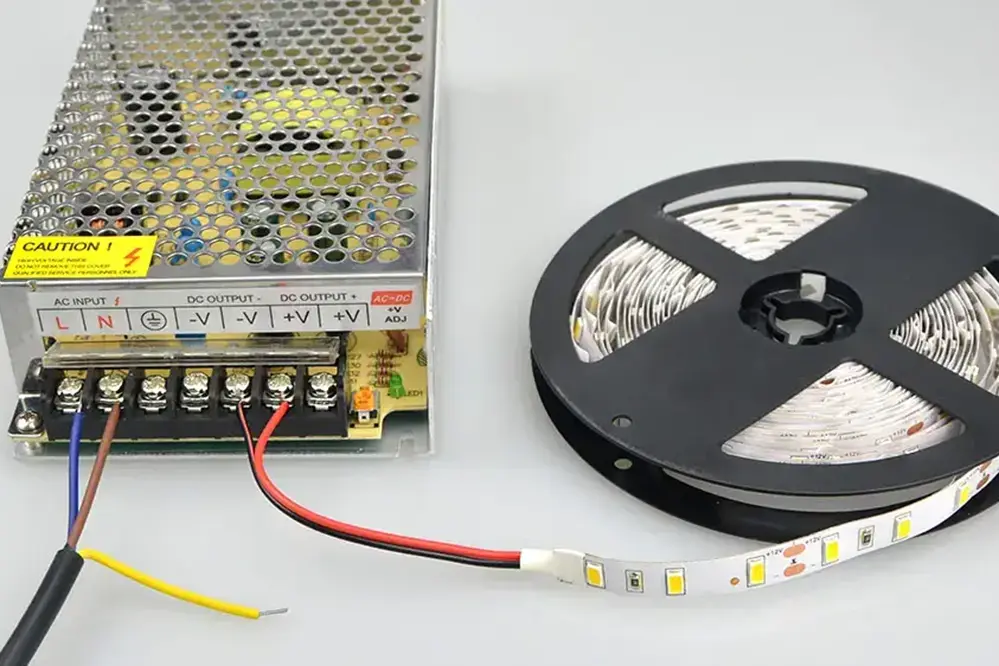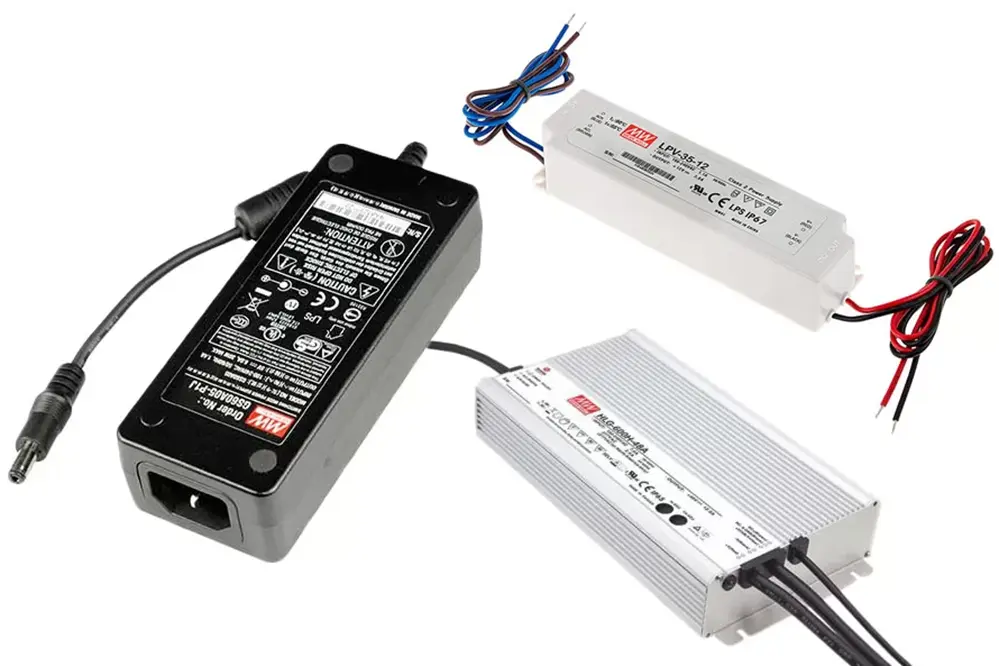Imagine setting up a stunning array of LED strip lights in your home, only to find them flickering and failing within weeks. Choosing the right power supply for LED strip lights is the key to avoiding this frustrating scenario. The power supply is the backbone of any LED lighting system, ensuring consistent performance and longevity.
This article will delve into the critical aspects of selecting the appropriate power supply for LED strip lights. From understanding voltage compatibility to calculating the necessary wattage and planning for future expansions, readers will gain valuable insights to make informed decisions. Continue reading to ensure your LED strip lights shine brightly, reliably, and with the optimal dimming effect.
Understanding LED Strip Light Power Requirements

Before selecting a power supply, knowing the specific needs of your LED strip lights is crucial.
Primarily, it is essential to calculate the total wattage required by the LED strip lights. This involves multiplying the power consumption per meter by the total length of the strips. Therefore, understanding the power draw in watts per meter is fundamental to ensure proper functioning.
Furthermore, ensure there is a margin of safety by opting for a power supply with a higher wattage capacity than the calculated requirement. A general recommendation is to add 20-25% extra to accommodate any unforeseen power surges or extensions that may be added later.
Finally, consider the constant voltage requirements of your LED strips and match them with the power supply output, ensuring you also have a compatible power adapter. A mismatch can result in subpar performance or even damage to the lights. By diligently calculating power and voltage needs, one ensures the longevity and brightness of their LED strip lights, illuminating their spaces with confidence and ease.
Types of Power Supplies

When learning how to choose the right power supply for LED strip lights, understanding the types available is paramount.
Switching power supplies, often popular, and the specific transformer type efficiently convert AC to DC.
These typically come in compact sizes, offering reliability and cost-effectiveness while minimizing excess heat generation. Switchers are a common choice for household applications.
Linear power supplies provide steady power, suitable for sensitive equipment requiring a clean voltage source. Although less efficient, their simplicity and robust performance are ideal under specific conditions. Both options are essential in their contexts, ensuring optimal performance for diverse LED lighting projects.
It’s also important to consider programmable power supplies for more advanced applications. These provide precision control over voltage and current settings, ideal for customization and troubleshooting. They typically come with digital interfaces, allowing seamless monitoring and adjustments, making them invaluable for professional lighting installations.
Calculating Power Needs
To determine how to choose the right power supply for LED strip light, it is essential first to calculate the overall power requirement. This involves understanding the power consumption per unit length, often specified in watts per meter, and multiplying it by the total length of the strip.
Once the total wattage is known, selecting a power supply with a margin of safety is advisable. Typically, choosing one rated 20-25% above the calculated wattage ensures reliable performance and longevity.
Determining Wattage
Selecting the correct power supply is vital for ensuring LED strip lights function optimally.
Proper wattage calculation can prevent overheating, thereby extending the lifespan of LED strip lights.
To begin with, one must ascertain the power consumption per length. Usually given in watts per meter, this figure is crucial.
After determining the total power requirement, consider selecting a power supply that exceeds this wattage by 20-25%. This buffer guarantees performance consistency and enhances durability.
Considering Voltage
When picking the right power supply for LED strip lights, understanding the voltage requirements is crucial.
Each LED strip light is designed to operate at a specified voltage, usually 12V or 24V. This information is typically provided by the manufacturer and is essential for avoiding potential damage or suboptimal performance. One must ensure the power supply matches the LED strip’s rated voltage to prevent inconsistencies and achieve peak efficiency.
Moreover, understanding voltage compatibility can be vital in reducing energy losses. Matching the power supply voltage with the LED strip’s requirement allows for smoother operation and elongated lifespan, as mismatched voltages can lead to unnecessary strain on the components.
Consequently, a professional approach to selecting the right power supply involves not only considering wattage but also ensuring voltage compatibility. This will ultimately foster a reliable and sustainable lighting solution, providing both efficiency and longevity. Such meticulous planning and consideration reflect a commitment to excellence and reliability in LED lighting projects.
Choosing the Right Power Supply for LED Strip Light
When selecting a power supply, determining the total wattage is paramount. This involves calculating the wattage requirement per meter and multiplying it by the total length of the LED strips.
To ensure a stable and long-lasting performance, one should account for the total wattage and add a 20% buffer to the power adapter’s capacity. This buffer safeguards against overloading and ensures that the system runs efficiently without overheating.
Utilizing terms like “constant voltage” and “constant current” is crucial in making an educated choice that aligns with the project’s specifications.
Matching Power Supply to LED Strip Light
A paramount aspect of successful LED strip lighting is matching the power supply correctly.
First and foremost, understanding the voltage rating of the LED strip light is essential. Typically, most LED strips operate on either 12V or 24V DC, and selecting a power supply with the correct matching voltage ensures compatibility and optimal performance.
Moreover, the power supply’s amperage rating must equal or exceed the total amperage draw of the LED strip lights. By adding a 20% margin above the required amperage, one can safeguard the system, guaranteeing stability and mitigating risks of short circuits.
Ultimately, choosing the right power supply is about ensuring the LED strip lights receive consistent and reliable power. This approach not only extends the lifespan of the lights but also enhances performance, contributing to the overall success of the lighting project.
Ensuring Compatibility
Choosing the correct power supply is crucial.
To ensure compatibility, one must verify the voltage requirements. Different LED strip lights operate on varying voltages, and it is paramount to select a power supply that matches this rating to maintain performance and prevent damage. Additionally, verifying the wattage requirements of the LED strips will help to avoid overloading the power supply.
Compatibility checks are essential for reliable operation.
Proper matching of connectors and wiring types also plays a significant role. It is advisable to use connectors that are specified by the manufacturer or those that meet industry standards to ensure a secure and stable connection for the LED strip lights.
By meticulously ensuring that all components, from voltage to connectors, harmonize well, one can create an efficient and long-lasting LED lighting system. This proactive approach fosters both safety and heightened performance, embodying the pinnacle of what can be achieved with LED strip lights when attention to detail is prioritized.
Safety Considerations
Safety is of the utmost importance.
Ensuring the correct power supply is integral to any LED lighting system’s safety. They should make sure that the power supply features overvoltage, overcurrent, and short-circuit protection mechanisms. These safeguards are crucial in mitigating potential risks and maintaining a secure operating environment for all equipment involved.
Regular inspection is essential.
Addressing heat dissipation is another pivotal strategy – as they know, excessive heat can adversely affect not only the power supply but also the LED strips themselves. Therefore, they should ensure sufficient ventilation and utilize heat sinks if necessary.
By adopting these comprehensive safety measures, individuals can confidently enjoy the myriad benefits of their dimmable LED strips, knowing their installations adhere to uncompromising safety standards. Prioritizing these considerations propels their projects towards not only brilliance in illumination but also excellence in safety and reliability.
Installation Tips for Power Supplies

Position the power supply in a location that maximizes airflow and ventilation to prevent overheating. This simple step will ensure longevity and consistent performance.
Mount the power supply securely, avoiding areas with excessive vibrations. Stability is crucial for maintaining operational integrity and safety.
Choose locations close to the LED strip lights to minimize voltage drop. Longer distances can result in power loss, compromising the brightness and efficiency of the lights.
Finally, consider future accessibility. Placing the power supply in an easily reachable spot will facilitate maintenance and troubleshooting. It is advisable to label connections and inputs, creating a streamlined and professional setup that supports the long-term sustainability of the lighting system.
You can check our other article: Step-by-Step Guide: Connect LED Strip Lights to Power Supply.
Troubleshooting Common Issues
Encountering issues with LED strip lights can be daunting, but most problems are easily solvable with a methodical approach.
First, inspect all wiring connections. Loose or faulty wiring often leads to intermittent lighting.
Next, ensure the power supply is functioning properly. Verify whether the voltage matches the LED strip’s requirements.
Additionally, check for overheating. Overheating can cause LED strips to flicker or shut down.
If the lights are dim, reassess the power supply capacity. Insufficient power can impact performance.
Finally, consider the environment. Excess moisture or extreme temperatures may degrade both the LED strips and their power supplies.
Remember, with the right tools and knowledge, anyone can resolve these common issues. Expertise in troubleshooting will ensure a consistently bright, reliable LED lighting setup.
Conclusion
Choosing the right power supply for LED strip lights is crucial for a reliable and efficient setup. Key considerations include voltage compatibility, wattage calculations, and future expansions. Verifying specifications and selecting a power supply with overhead capacity ensures functionality, longevity, and flexibility, resulting in a dependable lighting system.





